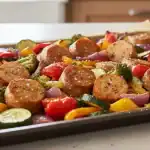When it comes to mixing bowls for bread making, most bakers agree that bigger is better! For kneading the dough, you will want a large mixing bowl so that you can mix ingredients properly.
Normally, large mixing bowls are between 4 and 10 quarts in size and are not ideal for everyday use, but they are ideal for baking. When buying a mixing bowl to make bread, here are some other features to check
Mixing Bowls Volume
With a larger set, you will have a greater variety of bowl sizes to choose from. Typically, bowl capacities for small sets increase by one quart per increment until the bowl capacity reaches five quarts. There is a wide range of sizes available in larger sets as well as increments between the smaller and larger sizes.
Melting butter in the microwave and preparing ingredients for recipes is easy when using the smallest capacity bowls. In general, mixing in medium-sized bowls will do most of the work, and larger bowls are good for mixing mixtures that need to be tossed together or when more space is needed to avoid spills.
If you can afford it, go for a set with the biggest bowl sizes possible. As you use your bowls more, you will find you need more, especially if you use them to store leftovers or serve food. Washing bowls because you don’t have enough is inconvenient and takes away from the enjoyment of preparing your favorite meal.
Mixing Bowls Shape
When it comes to choosing the best shape for a mixing bowl, everyone has an opinion, and it all depends on what you’re mixing. You may need to experiment a little to find what you like, but here are a few pointers to get you started.
Wider and shorter: This is the type of bowl most savory-focused cooks prefer since the shallower depth makes it easier to mix and whip whatever you’re making. According to standard ratios, the height of this type of bowl should be roughly half that of the diameter. The sides of a bowl with a diameter of 10 inches should be 5 inches tall (within an inch or two). It is also the ideal shape for tossing salads, salting french fries, and serving sauces on wings.
There is also a place in the kitchen for bowls that have nearly as tall a side as they do wide. The most popular pastry cooks use these bowls for mixing doughs and batters without having to worry about spilling whatever might splash. Taller-sided bowls mimic the deeper bowls on stand mixers that accommodate substantial amounts of mixing work, which makes them convenient for longer hand tools, immersion blenders, and hand mixers.
Flat bottom: The purpose of flat-bottomed bowls is to provide stability while mixing. If you’re mixing something that requires both hands or blending a liquid that you don’t want to risk tipping over, a flat-bottomed bowl is a bit more dependable than a rounded one.
For those looking for the flexibility of flicking or rotating a bowl while mixing, a rounded bottom bowl is the ideal choice. As a result of the bowl’s continuous curve, whisking and scraping the bowl is smooth. Alternatively, a nicely rounded bowl can also be used as a mold for recipes that are baked and flipped out to create a dome-shaped presentation.
Does The Mixing Bowls Dishwasher Safe?
Being able to rinse your mixing bowls and then wash them in the dishwasher is a convenience that shouldn’t be overlooked, especially when it comes to removing oily dressings or sanitizing bowls that have held raw meat. These days, even the cheapest bowls will be dishwasher safe and will be labeled as such.
Microwave Safe Mixing Bowls
One of the most important considerations for some cooks is whether or not the bowls are microwave-safe. Students and cooks with limited kitchen space may rely on the microwave to do some, if not all, of the cooking. Microwave-safe bowls should be clearly labeled. The majority of plastic, glass, and ceramic bowls fall into this category, but always double-check before purchasing.
Although some might claim stainless steel is technically safe to use in a microwave as long as it does not touch the sides, the bigger issue is that microwaves cannot pass through metal bowls, making cooking more difficult and uneven than with other materials. Additionally, if your bowl has cracks or uneven edges, you may inadvertently cause electromagnetic current to “arc” that can cause a fire in your microwave oven. Hence, using a bowl of a different material for microwaving will be effective and safe.
Stovetop
When they’re in a hurry, professional chefs heat butter or sauce directly on an open flame of a stovetop in a stainless steel bowl. This type of cooking occurs far less frequently at home, but having a bowl that can be flashed over an open flame or used over a double boiler can prove very useful.
You can use stainless steel bowls on the stovetop without worrying about the heat. On top of a double boiler, glass and ceramic bowls can also be used, but they do not conduct heat as well as metal, so your ingredients may continue to cook after they have been removed from the heat.
Oven
If a bowl is suitable for the stovetop, it should also be suitable for the oven. When baking with a mixing bowl, always check the manufacturer’s recommendations, and place it on a stable surface (such as a sheet tray) for even baking.
Mixing Bowls Colors
There are mixing bowls in just about any color you desire, from neutral monotones to rainbow palettes to coordinating sets that match your existing kitchen equipment. Most vibrant colors are available in plastic or ceramic, but you can also find them occasionally in colored glass.
Mixing Bowls Price
You will not have to break the bank to purchase the most practical pieces of kitchen equipment. An average set of mixing bowls with three to six pieces costs $25 to $35.
Cheap plastic and stainless steel bowls will work just as hard for you as the more expensive ones. Differentiated by the longevity of the bowls, additional parts (such as lids and graters), and cosmetic features that may or may not be valuable to you depending on your interest in displaying or serving the bowls. If you are looking for the best mixing bowls for bread making, we have a recommendation for you!
Warranties
Most mixing bowls come with manufacturer warranties that range from two years to a lifetime. The warranty covers both any out-of-the-box defects as well as any breakage that occurs while using the bowl (such as a Pyrex bowl breaking in the oven). Warranty coverage typically does not cover normal wear and tear, and any evidence that you used the bowl in a way not specified by the manufacturer is likely to void the warranty.
Was this helpful?
Hi there! I’m a food enthusiast and journalist, and I have a real passion for food that goes beyond the kitchen. I love my dream job and I’m lucky enough to be able to share my knowledge with readers of several large media outlets. My specialty is writing engaging food-related content, and I take pride in being able to connect with my audience. I’m known for my creativity in the kitchen, and I’m confident that I can be the perfect guide for anyone looking to take their culinary journey to the next level.









